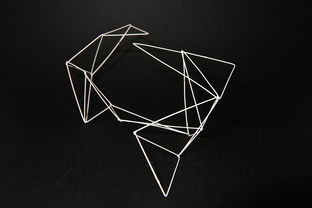Introduction: Fishing is an ancient and popular activity that has been enjoyed by people all over the world for centuries. Whether you are a beginner or an experienced angler, there are always new techniques and tips to improve your fishing skills. One such technique is using a fish net. In this article, we will discuss how to use a fish net effectively and provide some valuable tips to help you catch more fish.
Choosing the Right Fish Net: Before you start fishing with a net, it is important to choose the right one. There are various types of fish nets available, such as cast nets, dip nets, and seine nets. Each type is designed for different fishing situations and species of fish. Here are some factors to consider when selecting a fish net:
a. Size: Make sure the net is large enough to accommodate the size of the fish you are targeting. A larger net will provide more space for the fish to move around and reduce the risk of injury.
b. Mesh Size: The mesh size of the net determines the size of the fish that can pass through. A finer mesh is suitable for smaller fish, while a coarser mesh is better for larger fish.
c. Material: Fish nets are made from various materials, such as nylon, cotton, and silk. Choose a net made from a durable and resistant material that can withstand the elements and potential wear and tear.

Proper Netting Techniques: Once you have the right fish net, it is important to use it properly. Here are some tips to help you net fish effectively:
a. Approach the Fish: When using a fish net, it is crucial to approach the fish slowly and quietly. Make sure to maintain a low profile and minimize any sudden movements that may spook the fish.
b. Angle of Approach: Aim to approach the fish at a 45-degree angle. This will allow you to catch the fish without having to reach too far or causing unnecessary stress.
c. Netting the Fish: Once you are close to the fish, extend the net and gently lower it into the water. Swing the net in a wide, sweeping motion to cover as much area as possible. Make sure to keep the net submerged to avoid spooking the fish.
d. Reeling in the Fish: Once the fish is in the net, slowly reel it in. Avoid pulling the fish too quickly, as this may cause injury or stress.
Handling and Transporting the Fish: After you have successfully caught the fish, it is important to handle and transport it properly. Here are some tips to ensure the fish's well-being:
a. Keep the Fish in the Water: If possible, keep the fish in the water while you remove the net. This will help maintain the fish's oxygen supply and reduce stress.
b. Be Gentle: When handling the fish, be gentle and avoid unnecessary roughness. Use both hands to support the fish and minimize the amount of time it is out of the water.
c. Proper Storage: If you need to transport the fish, place it in a sturdy, well-ventilated container filled with water. Make sure the container is large enough to accommodate the fish comfortably.
Conclusion: Using a fish net is a valuable technique for catching a variety of fish species. By choosing the right net, using proper netting techniques, and handling the fish with care, you can increase your chances of success. Remember to practice patience and persistence, as fishing with a net can sometimes be a slow process. With time and experience, you will become a master fisher, reeling in fish after fish using your trusty fish net. Happy fishing!












